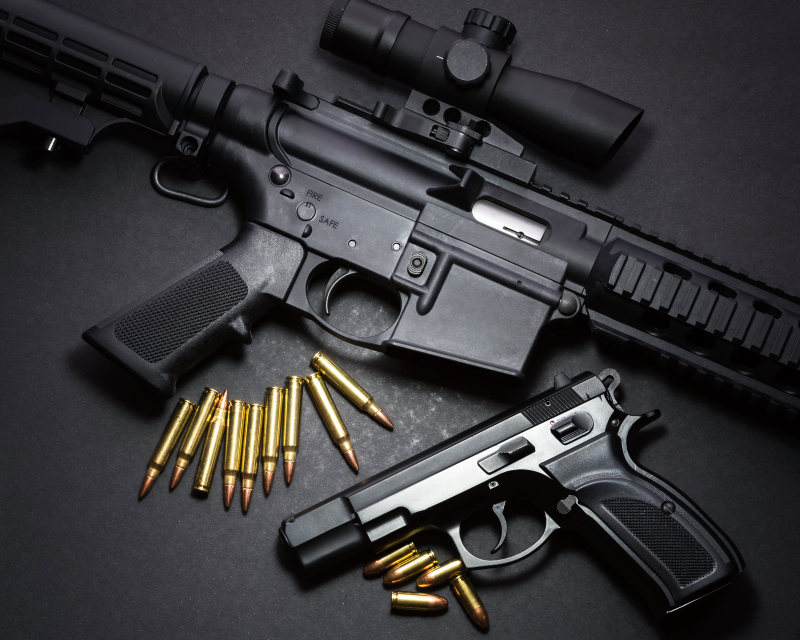Serbia Implements Comprehensive Arms Export Suspension
Author: Marko L. | Publish Date: Jun 28, 2025 | Fact checked by: Aleksa Miladinovic
Presidential Announcement Halts All Military Equipment Exports
Serbian President Aleksandar Vucic announced this week that the nation would suspend all arms exports, creating significant implications for international firearms and ammunition markets. The decision was communicated through both a presidential interview and an official statement from Serbia's Ministry of Defense.
The comprehensive export ban affects all weapons and military equipment manufactured within Serbian borders. According to the official announcement, any future arms exports will require approval from multiple government bodies, "in addition to the consent of other competent ministries and agencies, the consent of the National Security Council."

Diplomatic Tensions Drive Policy Change
Russian Relations Under Strain
The export suspension comes amid growing diplomatic pressure from Russia, Serbia's traditional ally, over Serbian-manufactured munitions reportedly appearing in Ukraine. These weapons may have reached Ukrainian forces through third-party intermediaries, creating tension in the Serbia-Russia relationship.
Middle East Arms Sales Complicate Situation
The diplomatic complications extend beyond the Ukraine conflict. Reports indicate Belgrade sold approximately 42.3 million euros worth of arms to Israel, further straining relationships given Iran's status as both a key Russian ally and Israel's current adversary in ongoing Middle East conflicts.
Impact on U.S. Firearms Market
Import Statistics and Market Position
According to federal regulatory data, American importers received 53,096 firearms from Serbia in 2024, comprising 18,850 handguns and 34,246 rifles. This volume places Serbia as the 16th largest source of imported firearms to the United States, positioned just behind Finland's 59,098 firearms (including Tikka brand products) and Portugal's 56,363 firearms (featuring FN-manufactured rifles under Browning and Winchester brands for the American market).
The 2024 import figures represent a substantial 13 percent increase compared to the 46,799 firearms imported from Serbia in 2020, indicating growing market presence for Serbian manufacturers in the U.S. market.
Major Serbian Manufacturers Affected
Zastava Arms: Leading Firearms Producer
Zastava Arms stands as Serbia's premier firearms manufacturer, operating as a government-owned enterprise in Kragujevac, approximately 90 miles from Belgrade. The company has established strong ties with U.S. importers, particularly Century Arms, to distribute their products in American markets.
Recognizing the importance of the U.S. market, Zastava established an Illinois-based American subsidiary in 2019, significantly expanding their operational footprint in North America.
Product Specialization and Market Position
Zastava specializes in PAP series Kalashnikov variants, positioning itself as one of the primary suppliers of European-manufactured AK platforms in the American market. The company maintains a competitive advantage over other Eastern European manufacturers in terms of import volume.
For comparison, Romanian-manufactured Romarm/Cugir/Nova Modul AK variants imported by Century under the Dracoand WASR designations, along with Bulgarian-produced Arsenal brand firearms, import significantly fewer units than Zastava products. Romania's total 2024 firearm imports reached 47,310 units, while Bulgaria contributed 12,066 firearms. Polish-manufactured firearms marketed under brands including FB Radom and Pioneer totaled 30,090 units during the same period.
Prvi Partizan: Ammunition Manufacturing Giant
Prvi Partizan (PPU), headquartered in Uzice, Serbia, represents a major force in ammunition production and handloading component manufacturing for American consumers. The company's history dates back to its 1928 founding, establishing nearly a century of manufacturing experience.
Production Capabilities and Market Reach
PPU currently manufactures over 160 different types of rifle and handgun ammunition, with particular expertise in obsolete and uncommon calibers that other manufacturers often overlook. The company achieved recognition as the third-largest foreign ammunition supplier to the United States in recent assessments.
Private Label Manufacturing
Several major sporting goods retailers utilize PPU as a private label manufacturer, repackaging Serbian ammunition under various in-house brand names. Consumers familiar with brands such as Monarch may experience supply disruptions as these partnerships face potential interruption due to the export ban.
Supply Chain and Market Implications
Current Inventory Considerations
Despite the immediate nature of the export suspension announcement, market disruptions may not occur immediately. Both Zastava and Prvi Partizan's U.S. operations likely maintain substantial inventory reserves, a strategic decision influenced by recent tariff adjustments and supply chain uncertainties.
Additionally, shipping containers already in transit or awaiting customs clearance will continue to enter the U.S. market, providing a buffer period before supply shortages become apparent.
Long-term Market Impact
Should the export suspension remain in effect for an extended period, American consumers and retailers may experience significant supply constraints. The duration of the ban will ultimately determine whether this represents a temporary market disruption or a fundamental shift in firearms and ammunition availability from Serbian sources.
The situation highlights the interconnected nature of international arms trade and how geopolitical tensions can rapidly impact civilian sporting goods markets, affecting everything from recreational shooting to hunting ammunition supplies across the United States.
Author:
Marko Lalovic

Marko is a dedicated aviation enthusiast whose passion began with an unforgettable encounter with fighter jets at an air show in his home country. As an audiophile and sound engineer by training, Marko was initially captivated by the distinctive sonic signature of military aircraft—the thunderous roar of afterburners and the precise mechanical symphony of aviation systems. This auditory fascination evolved into a comprehensive interest in defense technology, particularly firearms engineering and ballistics acoustics.